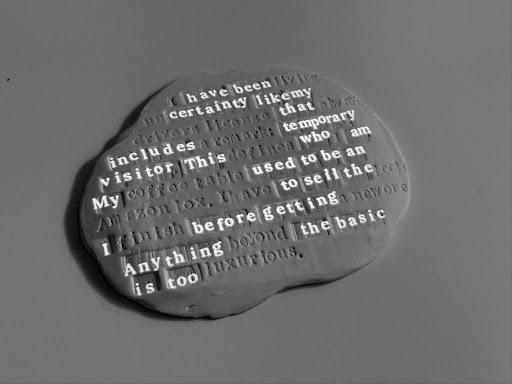“The Book of Diaspora” Evolves: Digital Installation Opens Call for Community Stories

When creative technologist Mengying (Amo) Zeng set out to capture the untold stories of America’s immigration experience through digital art last year, she didn’t expect to create one of 2024’s most talked-about installations. Now, fresh from being named a Lumen Prize finalist, Zeng is taking her groundbreaking work in bold new directions.
“We’re reimagining how technology can serve storytelling,” says Zeng, who today announced plans for two major expansions of “The Book of Diaspora,” set to debut in July 2025. As creative design director and lead artist, she’s launching an ambitious six month initiative to collect immigration narratives from across the country, which will fuel these new iterations.
The original installation, which caught the attention of major institutions with its innovative use of projection mapping, explored the dichotomy between immigrants’ public achievements and private struggles. Now, Zeng aims to extend the project further through two distinct approaches.
The first innovation transforms the experience into what Zeng describes as a “living book.” Using custom-developed text recognition technology, this interactive volume responds to readers’ movements, projecting dynamic visual narratives that complement the printed text. “Each page turn triggers a new layer of story,” she explains, “creating a conversation between physical and digital narratives.”
But it’s perhaps the second development that marks the most radical departure. Starting April 2025, a series of workshops will invite community members to create ceramic pieces that will serve as unique projection surfaces. These three-dimensional canvases will introduce new possibilities for how light, texture, and personal narrative can intersect

The timing of today’s announcement coincides with the launch of a nationwide story collection effort. Beginning December 2024, immigrants across the country will be invited to contribute their experiences through the project’s online platform. These narratives will form the foundation of both new versions, creating what Zeng envisions as “a living archive of contemporary immigration experiences.”
The project’s expansion comes at a crucial moment in the digital art landscape. The Lumen Prize nomination has positioned Zeng at the forefront of technology-driven storytelling, with her work challenging traditional boundaries between digital and physical art. Previous Lumen Prize works have been showcased at prestigious venues including London’s Barbican Centre and New York’s New Museum.
For Zeng, the project’s evolution reflects broader changes in how we think about immigration narratives. “The American Dream story often focuses on end points –
degrees earned, careers built,” she notes. “We’re more interested in the spaces between these achievements, the waiting, the uncertainty, the small victories and setbacks that shape the immigrant experience.”
The expansion builds on technological innovations from the original installation but pushes into new territory. The text recognition system required months of development to achieve the responsiveness needed for seamless interaction. Meanwhile, the ceramic component introduces entirely new technical challenges in projection mapping onto varied surfaces.
Looking ahead to the July 2025 premiere, Zeng emphasizes that community participation will be crucial to the project’s success. “These new versions aren’t just about displaying stories,” she says, “they’re about creating spaces where immigrants can actively shape how their experiences are presented and understood.”
The story collection phase begins next month through the project’s website, while registration for the ceramic workshops will open in early 2025. A series of previews and beta testing sessions are planned for spring 2025, leading up to the full installation debut in July.
For details about contributing stories or participating in workshops, visit amozeng.com/ book.






